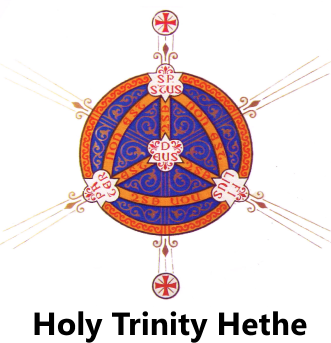The Catholic parish of Hethe owes its existence largely to the long presence of the Catholic Fermor family in the area, first at Somerton, with which the family was connected from the late C15, and from 1642 at Tusmore, where a free-standing chapel was built. The servants and tenants on the Tusmore estate were largely Catholic, and the area was known for having many Catholic inhabitants. In addition to the chapel at Tusmore, a place of worship was provided during the C18 in the neighbouring Hardwick manor house, also belonging to the Fermor family. Following the death of William Fermor in 1806 Tusmore was rented to a succession of tenants, all Protestant, and eventually sold in 1857 to the 1st Earl of Effingham, who demolished the chapel.
The Second Catholic Relief Act of 1791 had allowed the building of Catholic chapels, and the 1829 Act of Emancipation removed many other obstructions. The establishment of a chapel to serve the spiritual needs of the many Catholics who remained in the Hethe area was undertaken by Father Alfred Maguire in 1831, who was charged with providing a building to hold 300. The cost of £800 was raised partly from local people; Maguire also made an appeal in the Catholic Directory, explaining that the death of the local squire had left his people ‘destitute of a place where they may be enabled to be present at the adorable sacrifice of the Mass’. The new church opened on 22 May 1832. The identity of the architect is not known. An early visitor was the Dowager Lady Arundell of Wardour, who investigated the possibility of commissioning an oak altar from A W Pugin; there is no documentary evidence that this was ever produced.
A number of changes were made to the interior of the church in 1932, including the replacement of the stencil decoration to the sanctuary with a more elaborate scheme, possibly by Elphege or Oswald Pippet; this scheme formerly extended around the lower walls of the nave, but was overpainted in the 1980s. Whilst many Catholic churches underwent internal changes following the Second Vatican Council of 1962-5, in response to the understanding that the celebrant was now required to face the congregation, Holy Trinity retained its high altar, with no forward altar, and its communion rails.
The presbytery was erected at the same time as the church, with which it is linked. The graveyard was acquired a year or two later than the chapel plot, with the first burial taking place in 1836. Land was acquired for a school in 1831, and work began, but the building was not completed until 1870.
